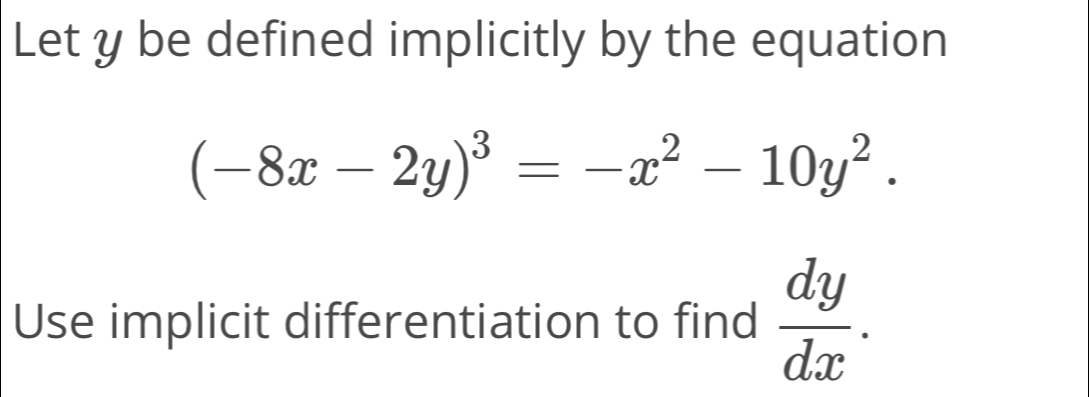Full solution
Q. Let be defined implicitly by the equationUse implicit differentiation to find .
- Differentiate with respect to : Differentiate both sides of the equation with respect to . We have the equation . We will apply the chain rule to the left side and the power rule to the right side. Remember that when differentiating with respect to , we treat as a function of and use the chain rule to include .
- Apply chain rule to left side: Apply the chain rule to the left side of the equation.The derivative of with respect to is , where we have multiplied by the derivative of the inside function , which is for the part and for the part because is a function of .
- Apply power rule to right side: Apply the power rule and chain rule to the right side of the equation.The derivative of with respect to is , and the derivative of with respect to is , where we have multiplied by because is a function of .
- Write down differentiated equation: Write down the differentiated equation.We now have .
- Solve for : Solve for .To solve for , we need to collect all terms containing on one side and the rest on the other side. We get:.
- Factor out : Factor out from the left side of the equation.
- Isolate : Isolate ..
- Simplify expression for : Simplify the expression for if possible.We can leave the expression as it is because it does not simplify easily. So, the final answer is:.

